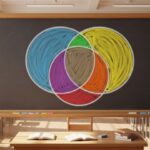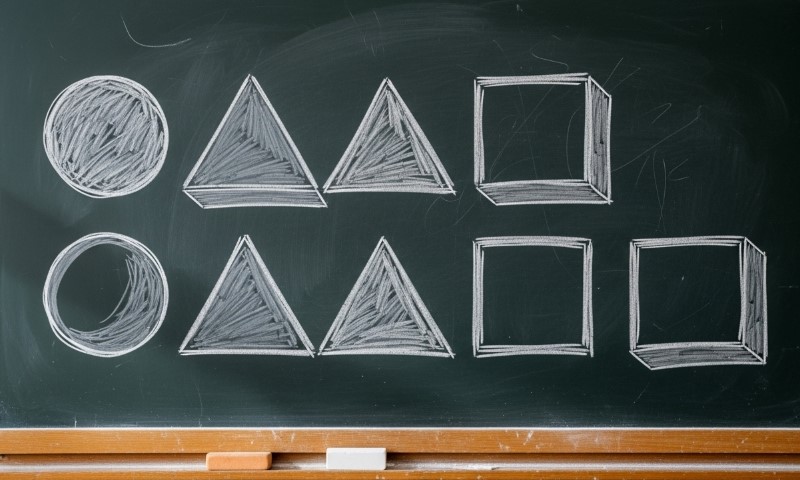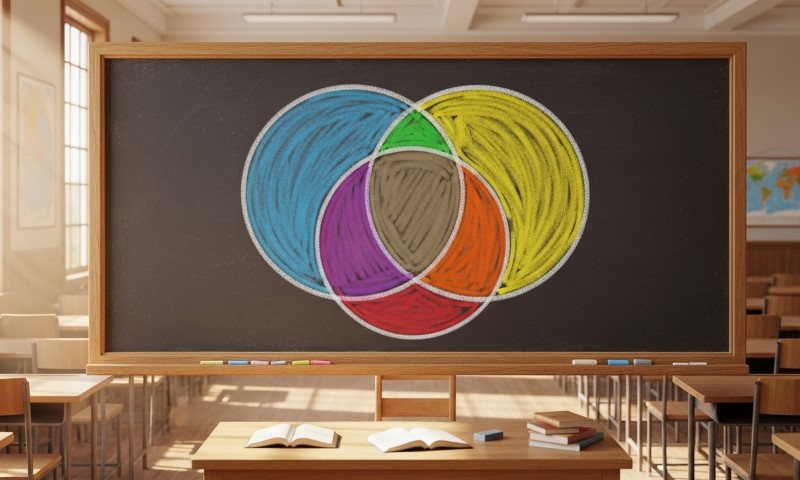
Share Post:
When kids first spot letters in math problems, it can feel like the numbers suddenly brought friends to class. Why is there an x sitting next to the 7?
Why are teachers putting letters into sums and formulas? The answer is surprisingly friendly: letters are not there to confuse anyone. They are shortcuts that make patterns clearer, rules easier to write, and real-life problems easier to solve.
Let’s break it down step by step in a way that parents and kids can read together. We’ll start with the simplest definition, then move into real examples, common mistakes, and practice tips.
Table of Contents
ToggleKey Takeaways
- A variable is a letter that stands for a number.
- Variables make rules and patterns shorter and more flexible.
- They can be unknowns, placeholders, changing numbers, or general rules.
- By Grade 6, kids are expected to write and evaluate expressions with letters.
The Quick Answer
A variable is a symbol, usually a letter, that stands for a number. Sometimes the number is unknown, sometimes it can change, and sometimes it represents a rule.
The letter helps keep math neat and reusable.
What a Variable Is, Exactly
Mathematicians like precision, so here’s a clear definition, followed by a kid-friendly version.
- Precise definition: A variable is a letter or symbol that represents a number or quantity whose value might change or is not yet known.
- Kid version: Think of a variable like a mystery box. Inside is a number, but you might not know what it is yet. Sometimes you solve a puzzle to find it, and sometimes you try different numbers to see what happens.
Alongside variables are constants (numbers that stay the same) and coefficients (numbers glued to variables as multipliers).
They all play roles in math sentences.
Why Letters Are Helpful in Everyday Life
Kids already think in terms of variables, even if they don’t realize it. Letters make rules easier to share:
- Cooking: “Use n cups of water for n servings of rice.” Change the servings, change the water.
- Travel: “Time = distance ÷ speed.” If the speed changes, the time changes.
- Games: “Score = 100 × level + coins.” More coins or higher levels mean a different score.
- Pocket money: “Savings after w weeks = 5 × w.” Each week adds the same amount.
By writing rules with a letter, you can adjust numbers without rewriting the whole problem.
Four Common Ways Kids Use Variables
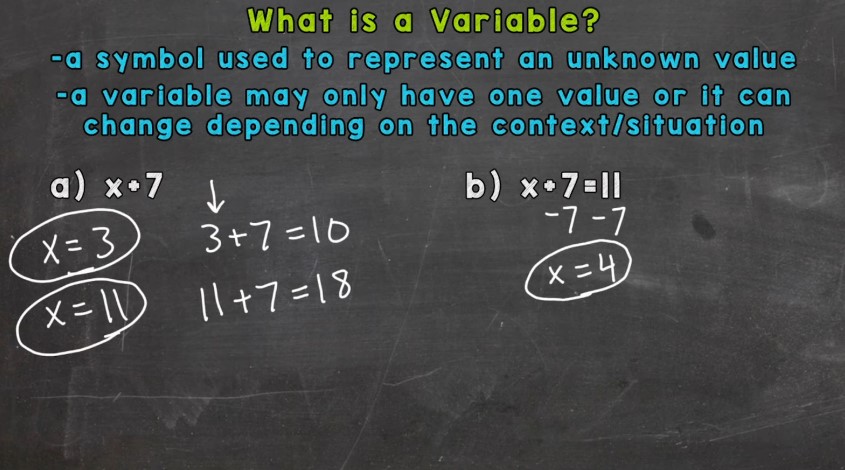
Kids meet variables in four main roles. Each one shows up in school and daily life.
1. As an Unknown Number
Equation: x + 7 = 15
Meaning: Find the number that makes the statement true. Here, x = 8.
2. As a Placeholder in a Formula
Formula: P = 2l + 2w (perimeter of a rectangle)
Meaning: l and w hold whatever length and width you give them.
3. As a Number That Can Vary
Rule: S = 5w (five euros saved each week)
Meaning: As w changes, S changes too.
4. As a General Number in a Pattern
Pattern: 3, 6, 9, 12 … Rule: t = 3n
Meaning: n can be 1, 2, 3, 4 … and the rule produces the pattern.
Common Letters Kids Will See
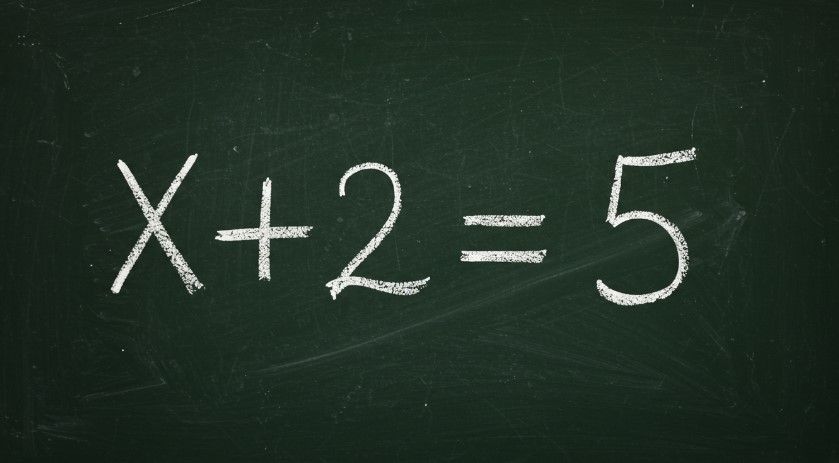
- x and y are classics.
- t for time, s for speed, h for height, n for “any number.”
- In geometry, r often stands for radius, s for side length.
Variables, Constants, and Coefficients
Sorting the main characters makes math less confusing.
| Word | What it means | Example | What it is in the example |
| Variable | A letter that can stand for a number | 2x + 5 | x is the variable |
| Constant | A fixed number | 2x + 5 | 5 is the constant |
| Coefficient | A number multiplying a variable | 2x + 5 | 2 is the coefficient |
This separation helps kids when they start simplifying expressions.
Writing Expressions
Starting around Grade 3, children turn short sentences into math expressions.
| Words | Expression | Example if the letter = number |
| “Five more than a number n” | n + 5 | If n = 7, then 12 |
| “Subtract y from 5” | 5 − y | If y = 2, then 3 |
| “Triple a number k” | 3k | If k = 9, then 27 |
| “Half of p” | p ÷ 2 | If p = 10, then 5 |
| “Eight more than twice m” | 2m + 8 | If m = 4, then 16 |
Substitution: Trying On Values
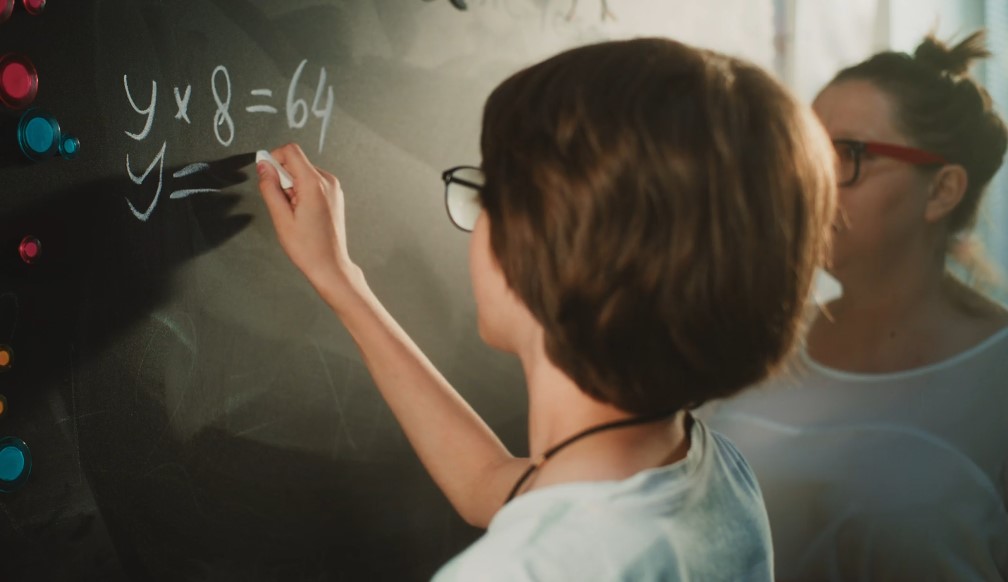
Once kids have an expression, they practice substitution. Example: If e = 3, evaluate 2e + 4. Steps: 2 × 3 + 4 = 6 + 4 = 10. It’s like testing outfits. You “try on” different numbers to see what happens.
Formulas Where Variables Show Up
Formulas are rules written neatly. Variables make them flexible.
- Perimeter of a rectangle: P = 2l + 2w
- Area of a rectangle: A = l × w
- Savings over time: S = 5w
- Temperature conversion: F = 9/5C + 32
Independent and Dependent Variables
Some variables move together. One drives the other.
- Independent variable: the input you pick.
- Dependent variable: the output that changes because of the input.
When Do Schools Introduce Variables?
@homeschooldoc Algebra with addition of variables. With my 5 year old. #math #homeschool #education #montessori #preschool #fyp #blackexcellence #seehergreatnes #earlychildhoodeducation #girldad #mygirl #gifted #counting #hardwork #teachersoftiktok #ShowUrGrillSkillz #earlyeducation #prouddad #algebra
- Grade 2-3: Symbols for unknowns, like 8 × ? = 48.
- Grade 6: Writing and evaluating expressions with letters.
By middle school, students tackle equations, inequalities, and functions with variables.
Common Kid Mistakes (and Fixes)
- Using × everywhere: In algebra, we write 3n instead of 3 × n. Say it aloud as “three times n.”
- Reversing subtraction: “Subtract y from 5” is 5 − y. Use counters to act it out.
- Mixing constants and coefficients: In 2x + 5, the 2 is attached to x, not floating.
- Thinking letters are labels, not numbers: Remind kids a letter can slide up and down the number line.
- Forgetting parentheses with negatives: If n = −3, then 2n = 2 × (−3) = −6.
Patterns and Tables
Tables help kids see changing numbers.
| Week (w) | Savings (S = 5w) |
| 1 | 5 |
| 2 | 10 |
| 3 | 15 |
| 10 | 50 |
The rule S = 5w matches the table naturally.
Word Problems to Equations
A quick three-step process:
- Pick a letter for the unknown.
- Write the relationship.
- Substitute numbers to solve.
Example: A rectangle is 4 units longer than it is wide. Width = w. What is the perimeter?
- Width = w, length = w + 4
- P = 2(w + 4) + 2w = 4w + 8
- If w = 5, then P = 28.
10 Problems Kids Can Try
- If n = 6, what is n + 9?
- If p = 12, what is p − 7?
- If k = 8, what is 3k?
- Translate: “Seven more than t.”
- Translate: “Subtract y from 10.”
- Use S = 4w. How much after 9 weeks?
- Use P = 2l + 2w with l = 7, w = 3.
- If m = −2, evaluate 2m + 5.
- Pattern: 2, 5, 8, 11 … Write a rule for the nth term.
- A taxi charges 3 to start and 2 per mile. Write a formula for cost C after m miles.
Answer key: 1) 15 2) 5 3) 24 4) t + 7 5) 10 − y 6) 36 7) 20 8) 1 9) 3n − 1 10) C = 3 + 2m
A Peek Ahead
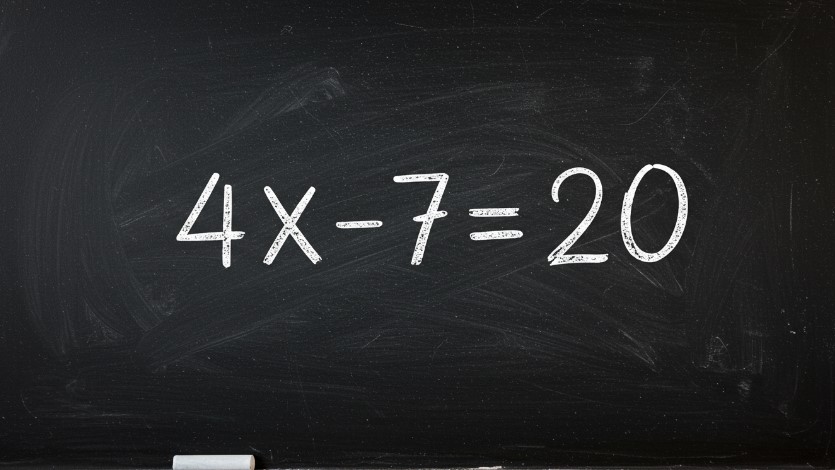
As kids grow, variables appear in new settings:
- Equations: 4x + 1 = 21.
- Inequalities: x > 5, meaning many numbers work.
- Functions: y = 2x + 3, read as “y depends on x.”
How Parents Can Support at Home
- Say expressions out loud: “two times something” for 2n.
- Use real-life rules: steps walked per day, minutes practiced, pages read.
- Switch letters: x can become n or t.
- Watch tricky phrases: subtraction word order matters.
- Praise progress, not just answers. Research shows children grow through stages before fully grasping variables.
Final Thought
Letters in math aren’t enemies. They’re friendly tools to describe changing numbers, hidden numbers, and patterns.
Once a child sees them as mystery boxes or sliding values, variables stop being strange and start feeling like natural companions in problem solving.
Related Posts:








